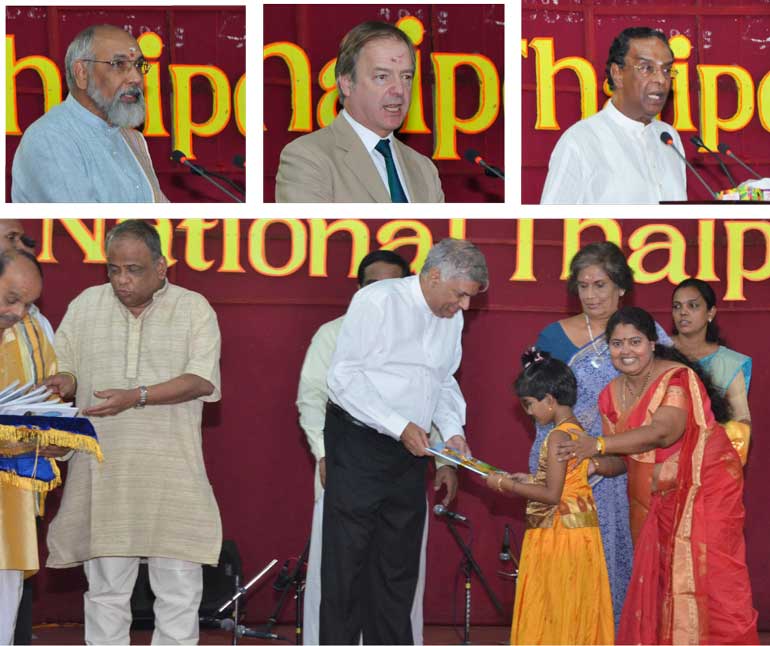Monday Mar 17, 2025
Monday Mar 17, 2025
Saturday, 9 January 2016 00:00 - - {{hitsCtrl.values.hits}}

The vision for internal transport within Colombo Port City will give first priority to non‐motorised modes of transport such as pedestrian walking and cyclists; second priority to public transportation; and third priority to private motorised transport.
According to the recently released Supplementary Environmental Impact Assessment (SEIA) report, Colombo Port City will be dependent on an efficient transport system in order to be competitive in the international market. For this reason, the report says it is important to deliver the vision of Colombo Port City on the foundation of a sound Transport Plan, which will be based on a separate Transport Impact Assessment study (TIA) that will be carried out under the Phase 2 EIA. In the Pedestrian Strategy, walking has been given the highest of priority in the Colombo Port City Master Plan. The most challenging aspect of walking is the weather. The high humidity and hot temperatures as well as the heavy rains that occur from time to time detract from the walking experience. Effort has been placed to negate these aspects within the Master Plan.
By planting trees along the pathways and building arcades along the Boulevards, the pedestrians will be shaded. Also, by orienting the building structures to maximise the breeze, the climate on street level will be pleasant. Malls and offices will be linked with high level, roofed, pedestrian walkways. The walkways will also provide straight links along the spine of the development where the population of Colombo Port City can cover an extensive distance by foot without suffering from the elements.
The report sees the bicycle strategy as a sustainable form of transport since the cycle is hard matched in terms of green credentials, speed and accessibility. The distances within Colombo Port City are highly suitable for cycling as any journey by bike can be done within 10 minutes. In addition the complete lack of gradients within the development lends itself well to cycling. Accordingly, strategic road sections with a segregated cycle‐way will be provided along with ample cycle parking.
The SEIA stresses that a fundamental requirement of a sustainable city concept is to develop an efficient network of public transport. The Master Plan has been developed to incorporate a fast and reliable public transport system where the sections will be designed to provide a segregated space so that public transport is unaffected by general traffic and congestion. Furthermore, it is envisaged a ferry will service the tourist district to the north‐ eastern part of Port City and link to the Marina in the southeast. This service will make intermediate stops along the canal in order to complement the other forms of public transport.
Motor traffic will be allowed throughout the development with exception of a few cycles and walkways adjacent to water and through parkland. Cars will have access to all parts of Port City, but this mode has the lowest priority. This means that signals will be setup to serve walking, cycling and public transport users first, and private motor traffic last.
Within Port City the principle will be to spread traffic across as many of the roads as possible. Private car parks will serve areas primarily comprised of office and residential, where possible. A proportion of spaces equipped with charging points will be reserved for electric vehicles. They shall be located in the most attractive part of the car park (close to pedestrian access and access points, lifts, etc.). All public car parks will be equipped with detectors in order to keep track of entering and exiting cars so that variable signs can indicate if there are parking spaces available or not.
Discover Kapruka, the leading online shopping platform in Sri Lanka, where you can conveniently send Gifts and Flowers to your loved ones for any event including Valentine ’s Day. Explore a wide range of popular Shopping Categories on Kapruka, including Toys, Groceries, Electronics, Birthday Cakes, Fruits, Chocolates, Flower Bouquets, Clothing, Watches, Lingerie, Gift Sets and Jewellery. Also if you’re interested in selling with Kapruka, Partner Central by Kapruka is the best solution to start with. Moreover, through Kapruka Global Shop, you can also enjoy the convenience of purchasing products from renowned platforms like Amazon and eBay and have them delivered to Sri Lanka.
Discover Kapruka, the leading online shopping platform in Sri Lanka, where you can conveniently send Gifts and Flowers to your loved ones for any event including Valentine ’s Day. Explore a wide range of popular Shopping Categories on Kapruka, including Toys, Groceries, Electronics, Birthday Cakes, Fruits, Chocolates, Flower Bouquets, Clothing, Watches, Lingerie, Gift Sets and Jewellery. Also if you’re interested in selling with Kapruka, Partner Central by Kapruka is the best solution to start with. Moreover, through Kapruka Global Shop, you can also enjoy the convenience of purchasing products from renowned platforms like Amazon and eBay and have them delivered to Sri Lanka.